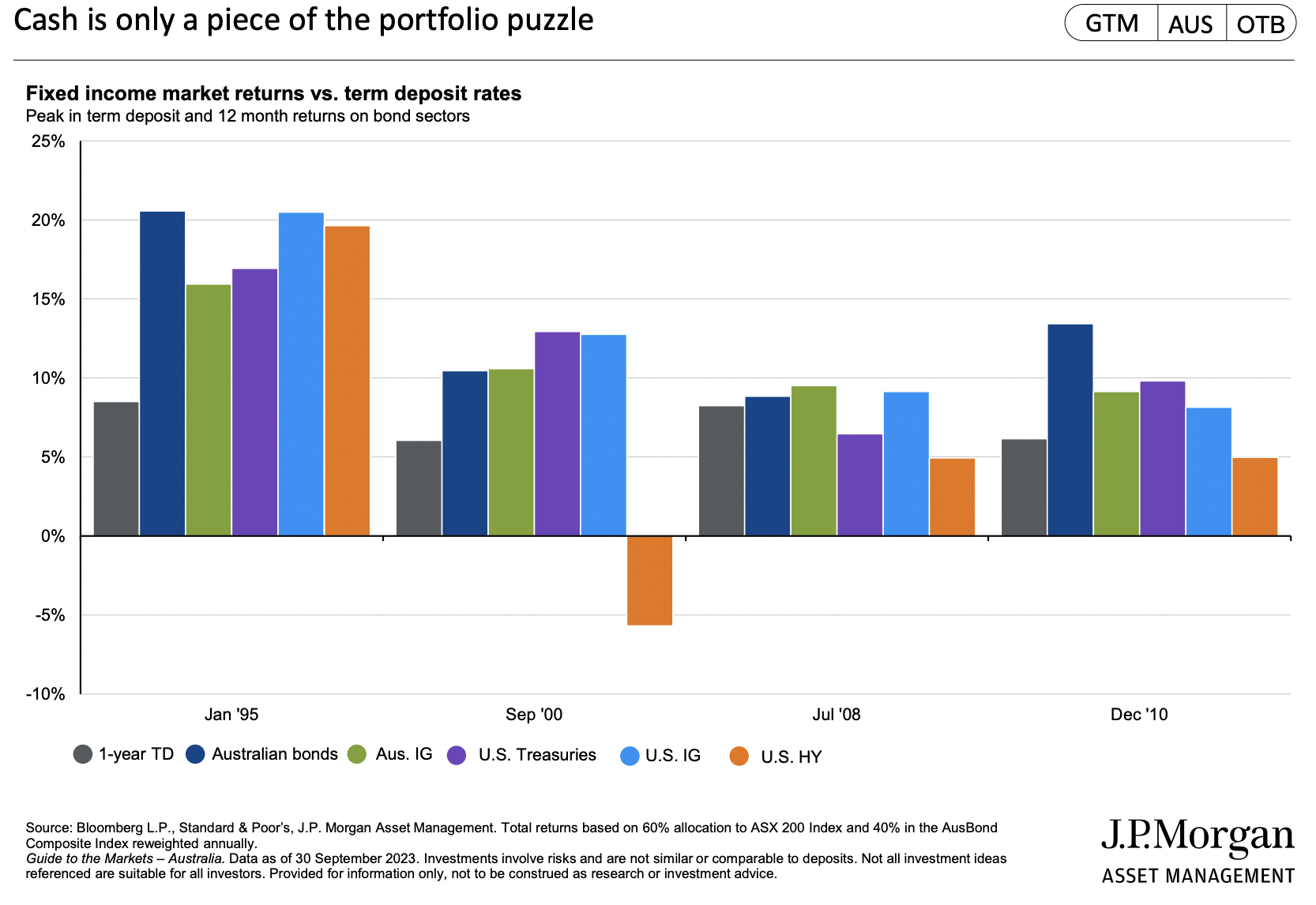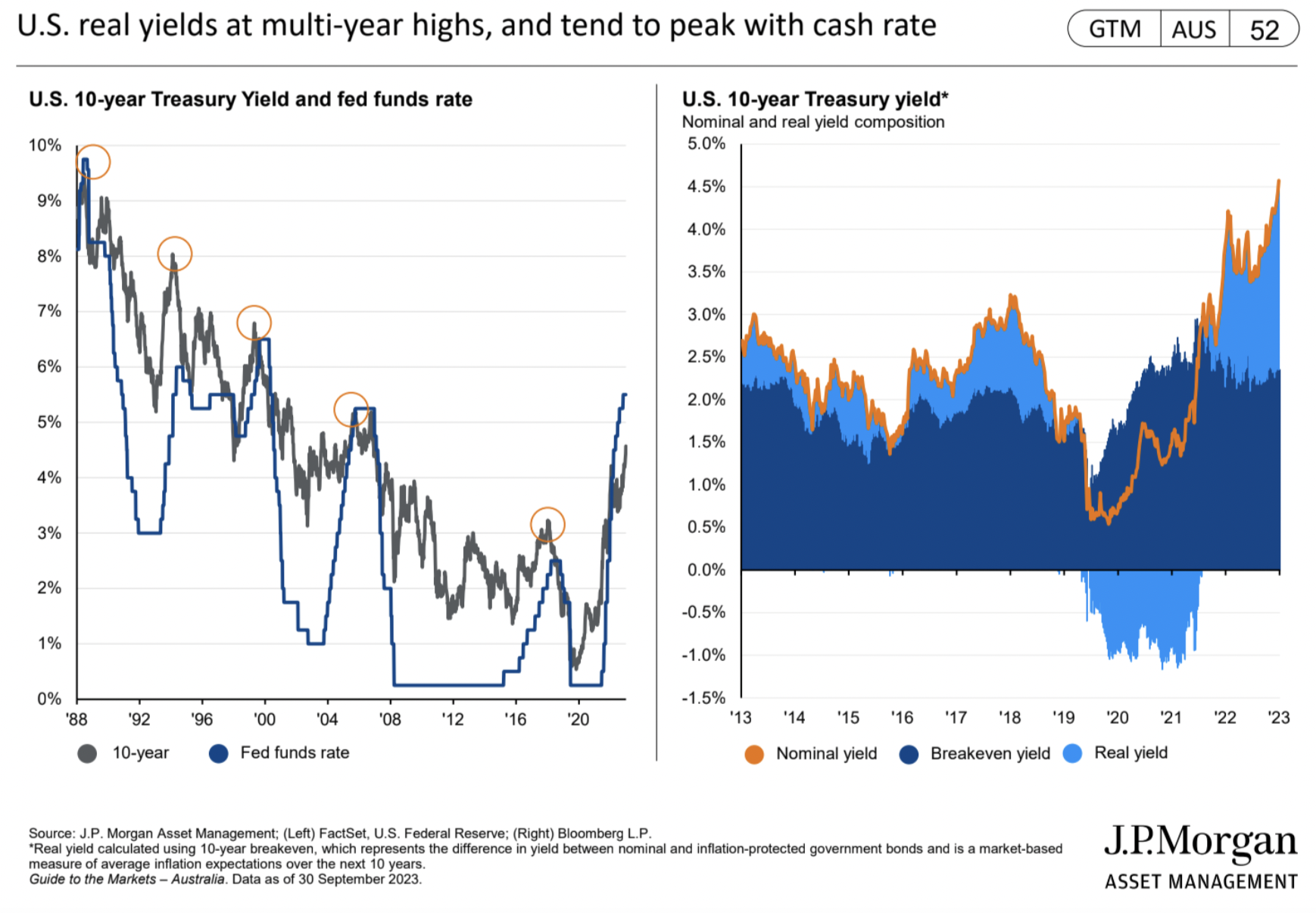J.P. Morgan: Now could be the time to put cash to work
For the longest time, Bridgewater Associates' Ray Dalio ran with the moniker: "cash is trash".
This made sense when rates were basically zero and risk assets were turbocharged by central bank liquidity. He stopped saying that, unsurprisingly, when rates took off in response to rampant inflation.
"Cash is a good investment now," he said earlier this year.
Indeed, since central banks have hiked rates, investors have parked their wealth in cash.
But with rates likely now at or near the top, Kerry Craig, Global Market Strategist at J.P. Morgan Asset Management, believes now's the time to put that cash to work.
This wire will summarise why the - albeit brief - era of cash may be over, and the assets J.P. Morgan is looking to rotate into.
Don't get stuck in cash
Craig believes investors generally hold too much cash, and for too long.
"They have this view that they get paid well to sit in cash and do nothing. it's a deer in t he headlights. If you're bullish and you think growth is on the horizon, you should go into equities," says Craig.
"You see every cycle over the 12 months of that rate peaking, most things beat cash."

Cash is a part of the portfolio puzzle right now, but there will be a cost to holding it in 12 months time in terms of lower yields and what could be lost out on.
"Carry is such an important thing right now when thinking about positioning," he said.
So where to rotate?
Craig offers bonds and some parts of the equity market as suitable alternatives to cash, with one requisite condition - a quality bias.
"On the equities side, that means US large caps given their free cashflows and relatively higher quality, even if valuations are above average (just under an 18x price to earnings multiple)."
In Australia, we have valuations around the average, while Japan could have a positive re-rating, helped along by currency appreciation."
All told, JPMorgan is neutral on equities in spite of these pockets of opportunity.
On the fixed income side, the outlook is more mixed.
We often hear about missing the tops and bottoms of cycles. But making moves based on higher yields is arguably an easier game to play than making moves based on falling yields.
Normally, central banks hike rates relatively slowly. But when rates are cut, yields typically fall hard and fast.

"If the RBA and the Fed cuts rates, they cut rates quickly because the economy is not in a good place," Craig said.
As the chart above shows, yields have mostly caught up with cash rates. If the market gets the sense that there aren't going to be more rate hikes, then yields could be expected to fall precipitously.
But not all yields; more-so those on securities with shorter duration.
So [while] term premiums are moving higher right now, Kerry believes the short end of the yield curve will come down quite steeply once the market assumes central banks are on the verge of cutting rates.
By the same token, so as long as yield curves are inverted, there isn't much carry trade to be had further out the curve.
2 topics
1 contributor mentioned

